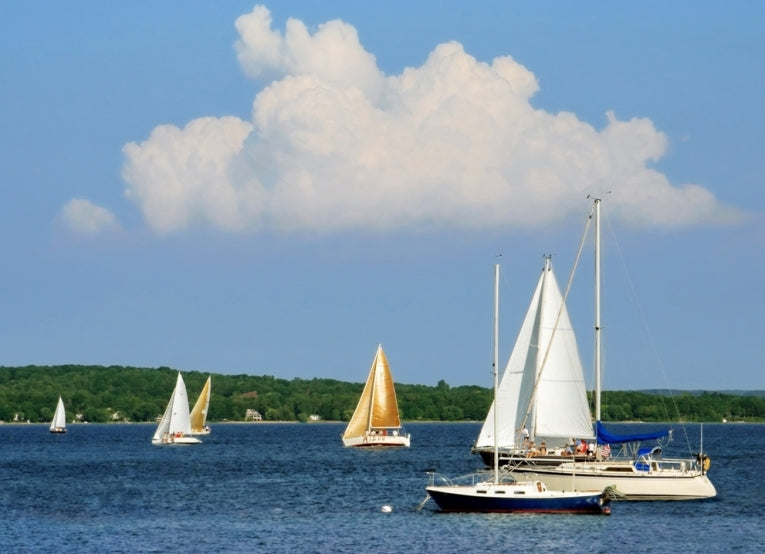To recycle the Great Lakes of North America is a mammoth task. For the last ten years all the previous effort at cleaning up and rehabilitating fish stocks has been at risk, with water loss from the St Clair River, which drains lake Michigan (and Lake Huron through the Straits of Mackinac), eventually into the Atlantic.
Dredging to clear and deepen the river channel is causing increased flow and water loss, which means a record low level will soon be reached, this winter. There is now a group of city mayors, representing 15 million people, who are making their representations to a bi-national commission. Lake levels must be raised, they say, to compensate for the loss of level caused by the dredging of an Army Corps project. The river has been used for deep-draft navigation for a century, but has now lost natural sand and silt cover and suffers from severe erosion itself.
Five years ago, a study began on rainfall and evaporation effects, taking into account a permanent drop of 16 inches from the Lakes' long term average levels. Lows occur in winter and can be 6 feet below high levels. A Canadian conservation group has found the 16 inch drop to be a drastic under-estimate, by at least 25%. Natural fluctuation is essential of course to preserve wetland status in various reserves, while climatic effects such as global warming are likely to alter weather patterns.
With Army Corps involvement in the actual study, there are suspicions that they blame an ice jam for erosion when their own incompetence could be a factor. The serious problems with low levels are under-use of docking facilities, weed growth and loss of sensitive wetland zones. An interesting historical comparison is the Chicago River reversal of flow in 1900. It began then to flow out of Lake Michigan, putting 2.1 million gallons into the Mississippi watershed, with a resultant 2 inch drop in lake levels.
Taking all this into account, the Joint commission have reversed the conclusions of the study and arranged a review of the $170 million river flow project that has been held out as a long-term solution and compare it to more rapid and effective measures. Even fish such as sturgeon in the St Clair are now being considered. Lake sturgeon are threatened and endangered in 19 out of the 20 states in which they can still be found. They are however "on the rebound" as juvenile sightings have helped fisheries experts, who struggle to determine trends with this long-lived Methuselah, the largest freshwater fish in North America.

This Canadian juvenile sturgeon is being released into the Fraser River, British Columbia - Sturgeon image; Credit: © Shutterstock
This is still a North versus South issue in a way. A residents group from Saginaw Bay (Huron) and Grand Traverse Bay (Michigan, shown above) have stated, "Given the history of consistent water level reductions since 1855, the unmitigated and unplanned increase in conveyance in the St. Clair River since 1962, and the uncertainties presented by climate change, we believe it would be irresponsible not to begin the process toward a regulatory structure now." Any kind of dam is opposed by conservationists, with their preference for a river bottom "static structure," to compensate for dredging effects.
The Joint Commissioners are due to report again this month, and can expect a hard ride from quite hostile press such as the vigilant Milwaukee Journal Sentinel. Their key function is to try to balance the effect on economies and ecologies. Good Luck!










